Halfpass 2
Half-Pass
In the light of actual knowledge
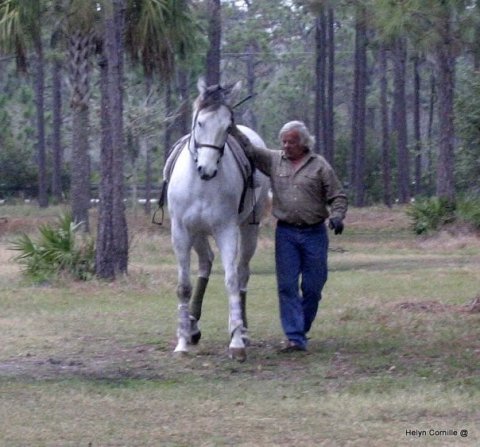
Jean Luc Cornille
Indeed, the lateral bending of the thoracic spine is the most important and beneficial element of the gymnastic of half-pass. To benefit from the move, the horse needs to wrap his thoracic spine forward and around the rider inside leg. This picture of Chazot working in hand on half-pass, illustrates the concept of bending wrapping the body forward and around the rider inside leg or, when working in hand, around the trainer’s body.
This is one of the reasons why leg-yielding is a bad movement. Teaching the horse to moves away from the leg does not prepare the horse mentally and physically for the task of wrapping his thoracic spine forward and around the rider’s inside leg.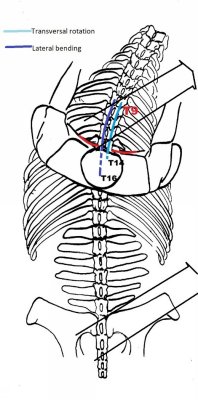
Already at the 19th century, Gustave Steinbrecht observed that lateral bending of the thoracic spine was easier to create keeping the haunches straight. Steinbrecht doe not explains the shoulder for talking about rotation since the transversal rotation coupled with lateral bending was not discovered at the time of Steinbrecht. However, the German author observed that if one keeps the horse haunches straight and pushes the shoulders slightly to the inside, the only way for the horse to execute the move was bending of the thoracic spine. It was explained a century later that lateral bending is coupled with a movement of transversal rotation shifting the dorsal spines toward the inside of the bend. Pushing the shoulders toward the inside, Steinbrech created a rotation, which consequently induced lateral bending.
Steinbrecht noticed that such bending of the thoracic spine requiered to keep the haunches straight, as suggested in the shoulder for. 
As a reminder, the scientific world name the rotation by the direction faced by the ventral part of the vertebral bodies. On this picture where right lateral bending is couppled with a rotation shifting the dorsal spines toward the inside of the bend, the ventral part of the vertebral body faces rleft and Denoix name the rotation as left rotation.
If we place one above the other the thoracic vertebrae starting at T14, and the cervical vertebrae, you have nice view of right lateral bending coupled with proper rotation.
Basically, lateral bending as well as transversal rotation of the thoracic spine occur between the rider upper thighs.
The reins effects promoted by our ancestors have only a theoretical effect on the thoracic vertebrae. In fact, they are likely to create inverted rotation.
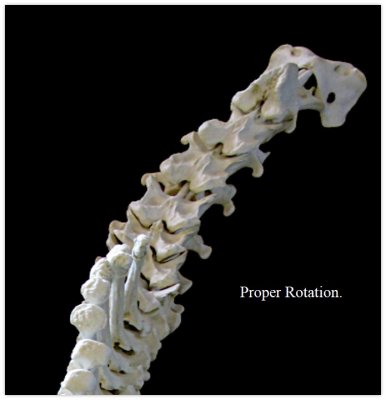
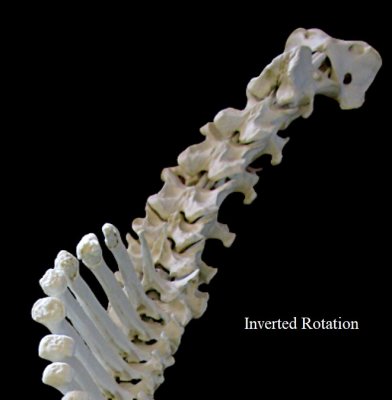
When the rider is more discreet, the rotation is very mild, more in line with these two drawings, proper rotation on the left, inverted rotation on the right.
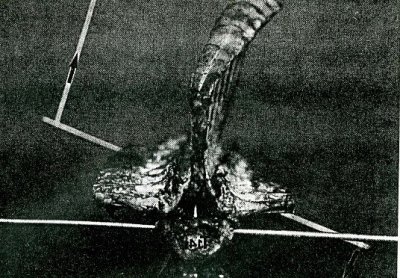
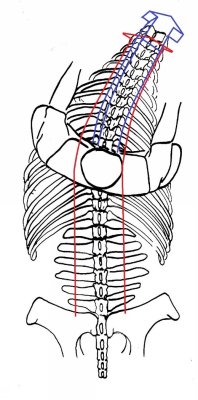
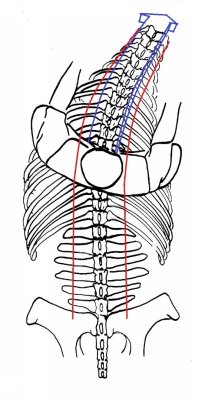
Proper rotation Inverted rotation
Rein effects, such as “la reine intermediaire” promoted in the classical literature, where the rider hand is acting toward the wither, are likely to create inverted rotation, and consequent shift on the outside shoulder.


Bending the thoracic spine with reins effects is part of the classical literature. The reins effects bend the cervical vertebrae but rarely the thoracic vertebrae. 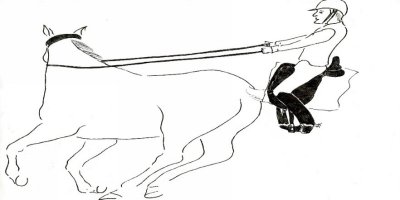
A good way to educate the horse physique for the athletic demand of half-pass, is combining Steinbrecht’s” though, Keep the croup straight to access lateral bending of the thoracic spine”, and Decarpentry advice to start with a very shallow lateral displacement. 
San Diego. Video half pass indoor
Lateral bending of the horse thoracic spine occurs between the rider’s upper thighs. However, pressure of the thighs alone does not work. The concept of integrity needs to be applied. The dynamics that the horse feels through the rider upper thighs originate from the muscular system of the rider’s back and abdominal muscles. The upper thighs hug the horse’s thoracic spine but the force comes the rider’s back and abdominal muscles
.


On this picture, which is used for the talk, “The Seat,” Chazot is working on right shoulder-in.
If the rider twists the spine turning the shoulders more than the pelvis, 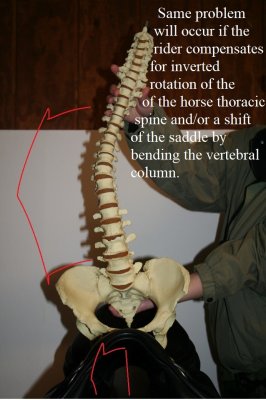 the integrity of the rider’s body is altered and the horse does not feel any rational suggestion. Shifting the weight on one seat bone or bending the vertebral column also induces confusing stimuli on the horse back.
the integrity of the rider’s body is altered and the horse does not feel any rational suggestion. Shifting the weight on one seat bone or bending the vertebral column also induces confusing stimuli on the horse back.
The main asset of the lateral bending is the associated rotation, which, with the participation of the pectoral muscles does have a lifting effect. This is how this horse evolved from a very flat trot to a trot with high suspension. The muscular development allowing the evolution was created using the gymnastic of half-pass. This implies that the lateral bending is coupled with the proper rotation.



San Diego Video, flat trot, good trot.
During half-pass lateral bending and transversal rotation occur in the direction of the motion. The adduction of the left hind leg as well as the adduction of the left foreleg could induce rotation in the opposite direction. 
In 1964, Richard Tucker talked about the phenomenon of passive and active rotation. Two decades later, Jean Marie Denoix furthered the concept which is well illustrated by the work of Edward Muybridge decades earlier.
When one leg is on support and the other is into the swing phase, gravity tends to pull down the side of the leg off the ground. In case of half pass right, when the right foreleg is on the ground and the left is into the swing phase, gravity tends to pull the left side down, and the dorsal spines to the left. The muscles of the thoracic area as well as the forelegs extrinsic muscles have to resist and invert this tendency.
Tucker’s explanation is in the same line of thoughts. When the right foreleg moves into the swing phase, the left side of the horse body is supported by the left foreleg and the attraction of gravity tends to create a passive rotation shifting the dorsal spines to the right. Such passive rotation alters the forward motion of the right foreleg and is inverted into an active rotation the other way by the muscles of the thoracic area as well as the forelegs extrinsic muscles. 
When the rotation is corrected as illustrated by the rider on the second plan, the lateral bending of the thoracic spine as well as the rotation of the dorsal spine in the direction of the motion, increases the work of the muscles creating lateral bending and associated rotation of the vertebrae. The muscular work is increased by the kinematics of the hind and front limbs.

By contrast, when the rotation is inverted as illustrated by the rider on the first plan, the gymnastic of half pass is reduced to some elementary work of the hind and front limbs adductor and abductors muscles.
The gymnastic exercise allowing this horse to move from a flat trot to a powerful trot with high suspension, demands a specific orchestration of the horse’s whole physique.
Jean Luc Cornille


